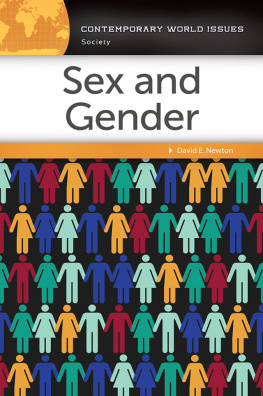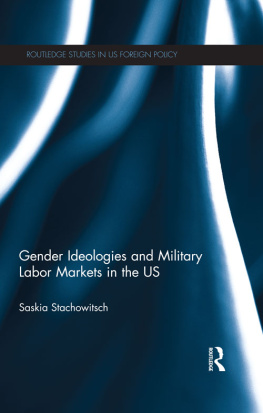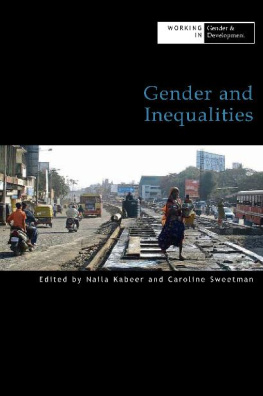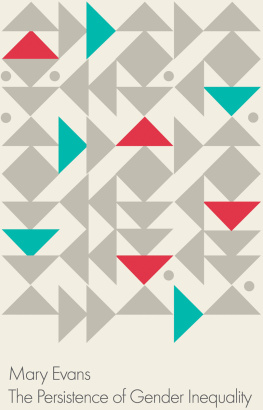Cover
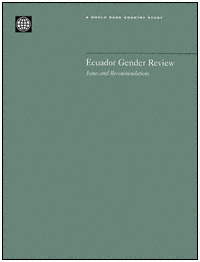
| title | : | Ecuador Gender Review : Issues and Recommendations World Bank Country Study, 0253-2123 |
| author | : |
| publisher | : | World Bank |
| isbn10 | asin | : | 0821347780 |
| print isbn13 | : | 9780821347782 |
| ebook isbn13 | : | 9780585376240 |
| language | : | English |
| subject | Gender--Ecuador, Ecuador--sexes--social aspects. |
| publication date | : | 2000 |
| lcc | : | HQ1075.E38 2000eb |
| ddc | : | 305.3 |
| subject | : | Gender--Ecuador, Ecuador--sexes--social aspects. |
Page i
Ecuador Gender Review
Issues and Recommendations
A WORLD BANK COUNTRY STUDY

Page ii
Copyright 2000
The International Bank for Reconstruction
and Development/THE WORLD BANK
1818 H Street, N.W.
Washington, D.C. 20433, U.S.A.
All rights reserved
Manufactured in the United States of America
First printing June 2000
World Bank Country Studies are among the many reports originally prepared for internal use as part of the continuing analysis by the Bank of the economic and related conditions of its developing member countries and of its dialogues with the governments. Some of the reports are published in this series with the least possible delay for the use of governments and the academic, business and financial, and development communities. The typescript of this paper therefore has not been prepared in accordance with the procedures appropriate to formal printed texts, and the World Bank accepts no responsibility for errors. Some sources cited in this paper may be informal documents that are not readily available.
The findings, interpretations, and conclusions expressed in this paper are entirely those of the author(s) and should not be attributed in any manner to the World Bank, to its affiliated organizations, or to members of its Board of Executive Directors or the countries they represent. The World Bank does not guarantee the accuracy of the data included in this publication and accepts no responsibility for any consequence of their use. The boundaries, colors, denominations, and other information shown on any map in this volume do not imply on the part of the World Bank Group any judgment on the legal status of any territory or the endorsement or acceptance of such boundaries.
The material in this publication is copyrighted. The World Bank encourages dissemination of its work and will normally grant permission promptly.
Permission to photocopy items for internal or personal use, for the internal or personal use of specific clients, or for educational classroom use, is granted by the World Bank provided that the appropriate fee is paid directly to Copyright Clearance Center, Inc., 222 Rosewood Drive, Danvers, MA 01923, U.S.A., telephone 978-750-8400, fax 978-750-4470. Please contact Copyright Clearance Center prior to photocopying items.
For permission to reprint individual articles or chapters, please fax your request with complete information to the Republication Department, Copyright Clearance Center, fax 978-750-4470.
All other queries on rights and licenses should be addressed to the World Bank at the address above, or fax no. 202-522-2422.
ISBN: 0-8213-4778-0
ISSN: 0253-2123
Library of Congress Cataloging-in-Publication Data has been applied for.
Page iii
CONTENTS
| Abstract | iv |
| Preface | v |
| Acknowledgments | vi |
| List of Abbreviations and Acronyms | vii |
| Executive Summary | viii |
| 1. INTRODUCTION | 1 |
| 2. CONTEXT | 3 |
| M ACRO E CONOMIC S ETTING | 3 |
| P OVERTY | 5 |
| I NSTITUTIONAL F RAMEWORK | 6 |
| 3. OVERVIEW OF GENDER ISSUES AND TRENDS | 10 |
| D EMOGRAPHICS | 10 |
| R EPRODUCTIVE H EALTH | 12 |
| G ENERAL H EALTH | 16 |
| V IOLENCE | 20 |
| E DUCATION | 23 |
| L ABOR | 29 |
| E CONOMIC C RISIS AND S OCIAL P ROTECTION | 36 |
| 4. THE RURAL SECTOR | 40 |
| G ENDER R OLES IN A GRICULTURE | 40 |
| Sierra | 40 |
| Costa | 41 |
| Oriente | 42 |
| L AND | 42 |
| Sierra | 43 |
| Costa | 44 |
| M IGRATION | 44 |
| 5. SUMMARY AND IMPLICATIONS OF FINDINGS | 48 |
| 6. PROPOSED OVERALL STRATEGY AND PRIORITY ACTIONS | 52 |
| O VERALL S TRATEGY | 52 |
| P RIORITY A CTIONS | 53 |
| S ECTORAL R ECOMMENDATIONS | 55 |
| Health | 55 |
| Violence | 56 |
| Education | 57 |
| Labor | 58 |
| Rural Development | 59 |
| Economic Fluctuations and Social Safety Nets | 60 |
| Political Leadership and Participation | 61 |
| Institutional Framework | 61 |
| References | 62 |
| Appendix 1: Matrix of Gender Issues by Project | 68 |
| Appendix 2: Preliminary Lessons from the National Rural Development Project (PRONADER) | 76 |
Page iv
ABSTRACT
This paper presents findings of a review of gender trends and issues in Ecuador in demographics, health, violence, education, labor markets and social protection. It also briefly describes the current macroeconomic context and poverty situation as well as recent gender-related institutional and legal advances and includes a more comprehensive section on gender issues in rural development.
The report finds that Ecuador has witnessed important advances in reducing gender disparities and addressing gender-related development issues. Fertility has decreased, education inequalities have diminished, disparities in labor force participation have been reduced and advances have been made in the area of domestic violence. But issues related to gender remain. Reproductive health care remains a problem for women. As for men, accidents and violence are by far the most serious health risks among adolescent males and alcoholism and substance abuse are a serious social concern. In education, as a result of gender socialization, girls continue to follow different academic paths than boys, which affects their opportunities in the job market, their earning potential and over time, their well being. For boys, poverty has led them to enter the labor market at an early age thereby affecting their education prospects and human capital acquisition.
As a long term strategy, gender policies and programs in Ecuador should address socialization processes that reinforce traditional gender roles. Short term measures, however, need to focus on the acute and immediate needs of the population. And this short term and long term gender work should also not be limited to programs targeting girls and women only but rather should also focus on boys and men. The report identifies six priority action areas. First, both female and male gender issues need to be considered when designing and implementing social safety nets and emergency assistance programs. Second, indigenous peoples initiatives should be strengthened so that they address gender differences and disparities. Third, issues such as maternal mortality, AIDS and STDs, teenage pregnancy, and family planning need to be addressed in an integrated fashion under the rubric of reproductive and sexual health. Fourth, initiatives need to be developed to address at-risk youth. Fifth, the institutional framework on gender at the national level needs to be defined and strengthened. And sixth, an evaluation of ongoing work on gender should be carried out to examine lessons from past gender interventions.
Next page

